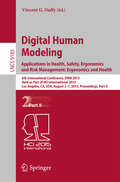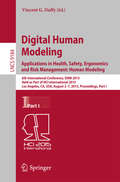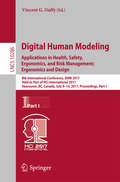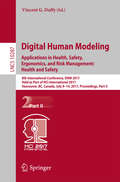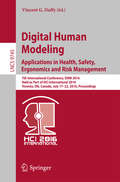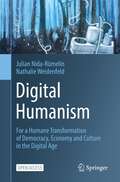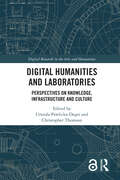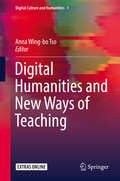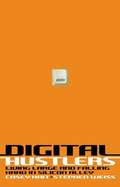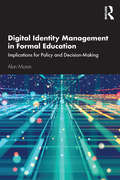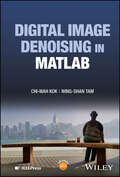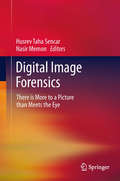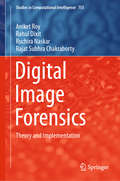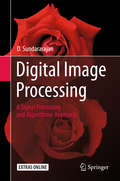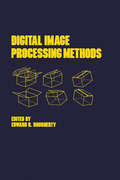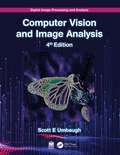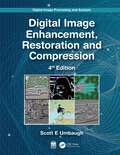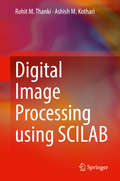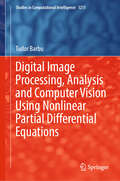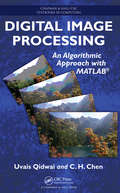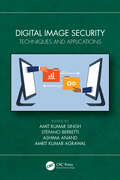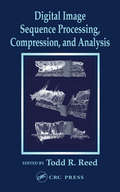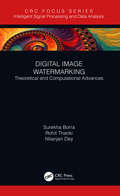- Table View
- List View
Digital Human Modeling. Applications in Health, Safety, Ergonomics and Risk Management: Ergonomics and Health
by Vincent G. DuffyThe two-volume set LNCS 9184-9185 constitutes the constitutes the refereed proceedings of the 6th International Conference on Digital Human Modeling and Applications in Health, Safety, Ergonomics and Risk Management 2015, held as part of the 17th International Conference on Human-Computer Interaction, HCII 2015, held in Los Angeles, CA, USA, in August 2015. The total of 1462 papers and 246 posters presented at the HCII 2015 conferences was carefully reviewed and selected from 4843 submissions. These papers address the latest research and development efforts and highlight the human aspects of design and use of computing systems. The papers thoroughly cover the entire field of human-computer interaction, addressing major advances in knowledge and effective use of computers in a variety of application areas. The total of 96 contributions included in the DHM proceedings were carefully reviewed and selected for inclusion in this two-volume set. The 52 papers included in this volume are organized in the following topical sections: anthropometry and ergonomics; motion modeling and tracking; human modeling in transport and aviation; human modeling in medicine and surgery; quality in healthcare.
Digital Human Modeling. Applications in Health, Safety, Ergonomics and Risk Management: Human Modeling
by Vincent G. DuffyThe two-volume set LNCS 9184-9185 constitutes the constitutes the refereed proceedings of the 6th International Conference on Digital Human Modeling and Applications in Health, Safety, Ergonomics and Risk Management 2015, held as part of the 17th International Conference on Human-Computer Interaction, HCII 2015, held in Los Angeles, CA, USA, in August 2015. The total of 1462 papers and 246 posters presented at the HCII 2015 conferences was carefully reviewed and selected from 4843 submissions. These papers address the latest research and development efforts and highlight the human aspects of design and use of computing systems. The papers thoroughly cover the entire field of human-computer interaction, addressing major advances in knowledge and effective use of computers in a variety of application areas. The total of 96 contributions included in the DHM proceedings were carefully reviewed and selected for inclusion in this two-volume set. The 44 papers included in this volume are organized in the following topical sections: modeling human skills and expertise; modeling human work and activities.
Digital Human Modeling. Applications in Health, Safety, Ergonomics, and Risk Management: Ergonomics and Design
by Vincent G. DuffyThe two-volume set LNCS 10286 + 10287 constitutes the refereed proceedings of the 8th International Conference on Digital Human Modeling and Applications in Health, Safety, Ergonomics, and Risk Management, DHM 2017, held as part of HCI International 2017 in Vancouver, BC, Canada. HCII 2017 received a total of 4340 submissions, of which 1228 papers were accepted for publication after a careful reviewing process. The 75 papers presented in these volumes were organized in topical sections as follows: Part I: anthropometry, ergonomics, design and comfort; human body and motion modelling; smart human-centered service system design; and human-robot interaction. Part II: clinical and health information systems; health and aging; health data analytics and visualization; and design for safety.
Digital Human Modeling. Applications in Health, Safety, Ergonomics, and Risk Management: Health and Safety
by Vincent G. DuffyThe two-volume set LNCS 9184-9185 constitutes the constitutes the refereed proceedings of the 6th International Conference on Digital Human Modeling and Applications in Health, Safety, Ergonomics and Risk Management 2015, held as part of the 17th International Conference on Human-Computer Interaction, HCII 2015, held in Los Angeles, CA, USA, in August 2015. The total of 1462 papers and 246 posters presented at the HCII 2015 conferences was carefully reviewed and selected from 4843 submissions. These papers address the latest research and development efforts and highlight the human aspects of design and use of computing systems. The papers thoroughly cover the entire field of human-computer interaction, addressing major advances in knowledge and effective use of computers in a variety of application areas. The total of 96 contributions included in the DHM proceedings were carefully reviewed and selected for inclusion in this two-volume set. The 52 papers included in this volume are organized in the following topical sections: anthropometry and ergonomics; motion modeling and tracking; human modeling in transport and aviation; human modeling in medicine and surgery; quality in healthcare.
Digital Human Modeling: Applications in Health, Safety, Ergonomics and Risk Management
by Vincent G. DuffyThis book constitutes the refereed proceedings of the 5th International Conference on Digital Human Modeling and Applications in Health, Safety, Ergonomics and Risk Management 2014, held as part of the 16th International Conference on Human-Computer Interaction, HCII 2014, held in Heraklion, Crete, Greece in June 2014, jointly with 13 other thematically conferences. The total of 1476 papers and 220 posters presented at the HCII 2014 conferences were carefully reviewed and selected from 4766 submissions. These papers address the latest research and development efforts and highlight the human aspects of design and use of computing systems. The papers accepted for presentation thoroughly cover the entire field of Human-Computer Interaction, addressing major advances in knowledge and effective use of computers in a variety of application areas. The 65 papers included in this volume are organized in topical sections on modeling posture and motion; anthropometry, design and ergonomics; ergonomics and human modeling in work and everyday life environments; advances in healthcare; rehabilitation applications; risk, safety and emergency.
Digital Humanism: For a Humane Transformation of Democracy, Economy and Culture in the Digital Age
by Julian Nida-Rümelin Nathalie WeidenfeldThis open access book deals with cultural and philosophical aspects of artificial intelligence (AI) and pleads for a “digital humanism”. This term is beginning to be en vogue everywhere. Due to a growing discontentment with the way digitalization is being used in the world, particularly formulated by former heroes of Internet, social media and search engine companies, philosophical as well as industrial thought leaders begin to plead for a humane use of digital tools. Yet the term “digital humanism” is a particular terminology that lacks a sound conceptual and philosophical basis and needs clarification still – and this gap is exactly filled by this book. It propagates a vision of society in which digitization is used to strengthen human self-determination, autonomy and dignity and whose time has come to be propagated throughout the world. The advantage of this book is that it is philosophically sound and yet written in a way that will make it accessible for everybody interested in the subject. Every chapters begins with a film scene illustrating a precise philosophical problem with AI and how we look at it – making the book not only readable, but even entertaining. And after having read the book the reader will have a clear vision of what it means to live in a world where digitization and AI are central technologies for a better and more humane civilization.
Digital Humanities and Laboratories: Perspectives on Knowledge, Infrastructure and Culture (Digital Research in the Arts and Humanities)
by Urszula Pawlicka-Deger Christopher ThomsonDigital Humanities and Laboratories explores laboratories dedicated to the study of digital humanities (DH) in a global context and contributes to the expanding body of knowledge about situated DH knowledge production. Including contributions from a diverse, international range of scholars and practitioners, this volume examines the ways laboratories of all kinds contribute to digital research and pedagogy. Acknowledging that they are emerging amid varied cultural and scientific traditions, the volume considers how they lead to the specification of digital humanities and how a locally situated knowledge production is embedded in the global infrastructure system. As a whole, the book consolidates the discussion on the role of the laboratory in DH and brings digital humanists into the interdisciplinary debate concerning the notion of a laboratory as a critical site in the generation of experimental knowledge. Positioning the discussion in relation to ongoing debates in DH, the volume argues that laboratory studies are in an excellent position to capitalize on the theories and knowledge developed in the DH field and open up new research inquiries. Digital Humanities and Laboratories clearly demonstrates that the laboratory is a key site for theoretical and critical analyses of digital humanities and will thus be of interest to scholars, students and practitioners engaged in the study of DH, culture, media, heritage and infrastructure.
Digital Humanities and Laboratories: Perspectives on Knowledge, Infrastructure and Culture (ISSN)
by Urszula Pawlicka-Deger Christopher ThomsonDigital Humanities and Laboratories explores laboratories dedicated to the study of digital humanities (DH) in a global context and contributes to the expanding body of knowledge about situated DH knowledge production.Including a foreword by David Berry and contributions from a diverse, international range of scholars and practitioners, this volume examines the ways laboratories of all kinds contribute to digital research and pedagogy. Acknowledging that they are emerging amid varied cultural and scientific traditions, the volume considers how they lead to the specification of digital humanities and how a locally situated knowledge production is embedded in the global infrastructure system. As a whole, the book consolidates the discussion on the role of the laboratory in DH and brings digital humanists into the interdisciplinary debate concerning the notion of a laboratory as a critical site in the generation of experimental knowledge. Positioning the discussion in relation to ongoing debates in DH, the volume argues that laboratory studies are in an excellent position to capitalize on the theories and knowledge developed in the DH field and open up new research inquiries.Digital Humanities and Laboratories clearly demonstrates that the laboratory is a key site for theoretical and critical analyses of digital humanities and will thus be of interest to scholars, students and practitioners engaged in the study of DH, culture, media, heritage and infrastructure.
Digital Humanities and New Ways of Teaching (Digital Culture and Humanities #1)
by Anna Wing-bo TsoThis volume includes a variety of first-hand case studies, critical analyses, action research and reflective practice in the digital humanities which ranges from digital literature, library science, online games, museum studies, information literacy to corpus linguistics in the 21st century. It informs readers of the latest developments in the digital humanities and their influence on learning and teaching.With the growing advancement of digital technology, humanistic inquiries have expanded and transformed in unfathomable complexity as new content is being rapidly created. The emergence of electronic archiving, digital scholarship, digitized pedagogy, textual digitization and software creation has brought about huge impacts on both humanities subjects and the university curricula in terms of nature, scope and design. This volume provides insights into what these technological changes mean for all the stakeholders involved and for the ways in which humanities subjects are understood. Part 1 of this volume begins with a broad perspective on digital humanities and discusses the current status of the field in Asia, Canada and Europe. Then, with a special focus on new literacies, educational implications, and innovative research in the digital humanities, Parts 2-4 explore how digital technology revolutionizes art forms, curricula, and pedagogy, revealing the current practices and latest trends in the digital humanities.Written by experts and researchers across Asia, Australia, Canada and Europe, this volume brings global insights into the digital humanities, particularly in the education aspect. It is of interest to researchers and students of cultural studies, literature, education, and technology studies.The strongest point of this collection of work is that, it brings important concepts to the study of digital literacies, for example, looking at it from the perspective of new literacies, languages and education.Daniel Churchill, Associate Professor, Faculty of Education, The University of Hong KongWith a rapidly growing advancement in digital tools, this book has made a relevant contribution by informing readers what the latest development of these tools are, and discusses how they can aid research, libraries, education and even poets across different continents. Samuel Kai-wah Chu, Associate Professor, Faculty of Education, The University of Hong Kong
Digital Hustlers: Living Large and Falling Hard in Silicon Alley
by Casey Kait Stephen WeissThe commercial and cultural explosion of the digital age may have been born in California's Silicon Valley, but it reached its high point of riotous, chaotic exuberance in New York City from 1995 to 2000--in the golden age of Silicon Alley. In that short stretch of time a generation of talented, untested twentysomethings deluged the city, launching thousands of new Internet ventures and attracting billions of dollars in investment capital. Many of these young entrepreneurs were entranced by the infinite promise of the new media; others seemed more captivated by the promise of infinite profits. The innovations they launched--from online advertising to 24-hour Webcasting--propelled both the Internet and the tech-stock boom of the late '90s. And in doing so they sent the city around them into a maelstrom of brainstorming, code-writing, fundraising, drugs, sex, and frenzied hype ... until April 2000, when the NASDAQ zeppelin finally burst and fell at their feet. In the pages of Digital Hustlers, Alley insiders Casey Kait and Stephen Weiss have captured the excitement and excesses of this remarkable moment in time. Weaving together the voices of more than fifty of the industry's leading characters, this extraordinary oral history offers a ground-zero look at the birth of a new medium. Here are entrepreneurs like Kevin O'Connor of DoubleClick, Fernando Espuelas of StarMedia, and Craig Kanarick of Razorfish; commentators like Omar Wasow of MSNBC and Jason McCabe Calacanis of the Silicon Alley Reporter; and inimitable Alley characters like party diva Courtney Pulitzer and Josh Harris, the clown prince of Pseudo.com. Together they describe a world of sweatshop programmers and paper millionaires, of cocktail-napkin business plans and billion-dollar IPOs, of spectacular successes and flame-outs alike. Candid and open-eyed, bristling with energy and argument, Digital Hustlers is an unforgettable group portrait of a wildly creative culture caught in the headlights of achievement.
Digital Identity Management in Formal Education: Implications for Policy and Decision-Making
by Alan MoranDigital Identity Management in Formal Education offers a broad analysis of the online self considered from educational policy, technological, legal and social perspectives. This book introduces the reader to the notion that digital identity is a multifaceted topic which requires a broad and systematic approach that is rooted in risk-based policy. It provides educational technologists, leaders and decision-makers with an accessible, jargon-free guide to their responsibilities towards students and instructors in today’s digitally networked schools and universities. Real-life examples illustrate how digital identities impact management and delivery, privacy and transactions, governance and accountability, and other interconnected choices in the use of technology-enabled services in formal learning.
Digital Image Denoising in MATLAB (IEEE Press)
by Wing-Shan Tam Chi-Wah KokPresents a review of image denoising algorithms with practical MATLAB implementation guidance Digital Image Denoising in MATLAB provides a comprehensive treatment of digital image denoising, containing a variety of techniques with applications in high-quality photo enhancement as well as multi-dimensional signal processing problems such as array signal processing, radar signal estimation and detection, and more. Offering systematic guidance on image denoising in theories and in practice through MATLAB, this hands-on guide includes practical examples, chapter summaries, analytical and programming problems, computer simulations, and source codes for all algorithms discussed in the book. The book explains denoising algorithms including linear and nonlinear filtering, Wiener filtering, spatially adaptive and multi-channel processing, transform and wavelet domains processing, singular value decomposition, and various low variance optimization and low rank processing techniques. Throughout the text, the authors address the theory, analysis, and implementation of the denoising algorithms to help readers solve their image processing problems and develop their own solutions. Explains how the quality of an image can be quantified in MATLAB Discusses what constitutes a “naturally looking” image in subjective and analytical terms Presents denoising techniques for a wide range of digital image processing applications Describes the use of denoising as a pre-processing tool for various signal processing applications or big data analysis Requires only a fundamental knowledge of digital signal processing Includes access to a companion website with source codes, exercises, and additional resources Digital Image Denoising in MATLAB is an excellent textbook for undergraduate courses in digital image processing, recognition, and statistical signal processing, and a highly useful reference for researchers and engineers working with digital images, digital video, and other applications requiring denoising techniques.
Digital Image Forensics
by Husrev Taha Sencar Nasir MemonPhotographic imagery has come a long way from the pinhole cameras of the nineteenth century. Digital imagery, and its applications, develops in tandem with contemporary society's sophisticated literacy of this subtle medium. This book examines the ways in which digital images have become ever more ubiquitous as legal and medical evidence, just as they have become our primary source of news and have replaced paper-based financial documentation. Crucially, the contributions also analyze the very profound problems which have arisen alongside the digital image, issues of veracity and progeny that demand systematic and detailed response: It looks real, but is it? What camera captured it? Has it been doctored or subtly altered? Attempting to provide answers to these slippery issues, the book covers how digital images are created, processed and stored before moving on to set out the latest techniques for forensically examining images, and finally addressing practical issues such as courtroom admissibility. In an environment where even novice users can alter digital media, this authoritative publication will do much so stabilize public trust in these real, yet vastly flexible, images of the world around us.
Digital Image Forensics: Theory and Implementation (Studies in Computational Intelligence #755)
by Rajat Subhra Chakraborty Aniket Roy Rahul Dixit Ruchira NaskarThis book discusses blind investigation and recovery of digital evidence left behind on digital devices, primarily for the purpose of tracing cybercrime sources and criminals. It presents an overview of the challenges of digital image forensics, with a specific focus on two of the most common forensic problems. The first part of the book addresses image source investigation, which involves mapping an image back to its camera source to facilitate investigating and tracing the source of a crime. The second part of the book focuses on image-forgery detection, primarily focusing on “copy-move forgery” in digital images, and presenting effective solutions to copy-move forgery detection with an emphasis on additional related challenges such as blur-invariance, similar genuine object identification, etc. The book concludes with future research directions, including counter forensics. With the necessary mathematical information in every chapter, the book serves as a useful reference resource for researchers and professionals alike. In addition, it can also be used as a supplementary text for upper-undergraduate and graduate-level courses on “Digital Image Processing”, “Information Security”, “Machine Learning”, “Computer Vision” and “Multimedia Security and Forensics”.
Digital Image Processing
by D. SundararajanThis book offers readers an essential introduction to the fundamentals of digital image processing. Pursuing a signal processing and algorithmic approach, it makes the fundamentals of digital image processing accessible and easy to learn. It is written in a clear and concise manner with a large number of 4 x 4 and 8 x 8 examples, figures and detailed explanations. Each concept is developed from the basic principles and described in detail with equal emphasis on theory and practice. The book is accompanied by a companion website that provides several MATLAB programs for the implementation of image processing algorithms. The book also offers comprehensive coverage of the following topics: Enhancement, Transform processing, Restoration, Registration, Reconstruction from projections, Morphological image processing, Edge detection, Object representation and classification, Compression, and Color processing.
Digital Image Processing Methods
by Edward R. DoughertyThis unique reference presents in-depth coverage of the latest methods and applications of digital image processing describing various computer architectures ideal for satisfying specific image processing demands.
Digital Image Processing and Analysis: Computer Vision and Image Analysis
by Scott E UmbaughComputer Vision and Image Analysis, focuses on techniques and methods for image analysis and their use in the development of computer vison applications. The field is advancing at an ever increasing pace, with applications ranging from medical diagnostics to space exploration. The diversity of applications is one of the driving forces that make it such an exciting field to be involved in for the 21st century. This book presents a unique engineering approach to the practice of computer vision and image analysis, which starts by presenting a global model to help gain an understanding of the overall process, followed by a breakdown and explanation of each individual topic. Topics are presented as they become necessary for understanding the practical imaging model under study, which provides the reader with the motivation to learn about and use the tools and methods being explored. The book includes chapters on image systems and software, image analysis, edge, line and shape detection, image segmentation, feature extraction and pattern classification. Numerous examples, including over 500 color images are used to illustrate the concepts discussed. Readers can explore their own application development with any programming languages, including C/C++, MATLAB®, Python, and R, and software is provided for both the Windows/C/C++ and MATLAB®environments. The book can be used by the academic community in teaching and research, with over 700 PowerPoint Slides and a complete Solutions Manual to the over 150 included problems. It can also be used for self-study by those involved with developing computer vision applications, whether they are engineers, scientists or artists. The new edition has been extensively updated and includes numerous problems and programming exercises that will help the reader and student to develop their skills.
Digital Image Processing and Analysis: Digital Image Enhancement, Restoration and Compression
by Scott E UmbaughDigital Image Enhancement, Restoration and Compression focuses on human vision-based imaging application development. Examples include making poor images look better, the development of advanced compression algorithms, special effects imaging for motion pictures and the restoration of satellite images distorted by atmospheric disturbance. This book presents a unique engineering approach to the practice of digital imaging, which starts by presenting a global model to help gain an understanding of the overall process, followed by a breakdown and explanation of each individual topic. Topics are presented as they become necessary for understanding the practical imaging model under study, which provides the reader with the motivation to learn about and use the tools and methods being explored. The book includes chapters on imaging systems and software, the human visual system, image transforms, image filtering, image enhancement, image restoration, and image compression. Numerous examples, including over 700 color images, are used to illustrate the concepts discussed. Readers can explore their own application development with any programming language, including C/C++, MATLAB®, Python and R, and software is provided for both the Windows/C/C++ and MATLAB environments. The book can be used by the academic community in teaching and research, with over 1,000 PowerPoint slides and a complete solutions manual to the over 230 included problems. It can also be used for self-study by those involved with application development, whether they are engineers, scientists or artists. The new edition has been extensively updated and includes numerous problems and programming exercises that will help the reader and student develop their skills.
Digital Image Processing using SCILAB
by Rohit M. Thanki Ashish M. KothariThis book provides basic theories and implementations using SCILAB open-source software for digital images. The book simplifies image processing theories and well as implementation of image processing algorithms, making it accessible to those with basic knowledge of image processing. This book includes many SCILAB programs at the end of each theory, which help in understanding concepts. The book includes more than sixty SCILAB programs of the image processing theory. In the appendix, readers will find a deeper glimpse into the research areas in the image processing.
Digital Image Processing, Analysis and Computer Vision Using Nonlinear Partial Differential Equations (Studies in Computational Intelligence #1211)
by Tudor BarbuThis book provides an overview of the applications of partial differential equations (PDEs) to image processing, analysis, and computer vision domains, focusing mainly on the most important contributions of the author in these closely related fields. It addresses almost all the PDE-based image processing and analysis areas, and the connections between partial differential equations, computer vision, and artificial intelligence: PDE-based image filtering, inpainting, compression, segmentation, content-based recognition, indexing and retrieval, and video object detection and tracking, energy-based (variational) and nonlinear diffusion-based models of second and fourth order, nonlinear PDE-based scale-spaces in combination to convolutional neural networks and high-level descriptors to perform edge and feature extraction.
Digital Image Processing: An Algorithmic Approach with MATLAB (Chapman & Hall/CRC Textbooks in Computing)
by Uvais Qidwai C.H. ChenAvoiding heavy mathematics and lengthy programming details, Digital Image Processing: An Algorithmic Approach with MATLAB presents an easy methodology for learning the fundamentals of image processing. The book applies the algorithms using MATLAB, without bogging down students with syntactical and debugging issues.One chapter can typically be compl
Digital Image Security: Techniques and Applications
by Amit Kumar Singh Stefano Berretti Ashima Anand Amrit Kumar AgrawalThis book will highlight cutting-edge research with a particular emphasis on interdisciplinary approaches, novel techniques, and solutions to provide digital image security for applications in diverse areas. It further discusses important topics such as biometric imaging, big data security and privacy in healthcare, security and privacy in the internet of things, and security in cloud-based image processing.This book Presents new ideas, approaches, theories, and practices with a focus on digital image security and privacy solutions for real-world applications. Discusses security in cloud-based image processing for smart city applications. Provides an overview of innovative security techniques that are being developed to ensure the guaranteed authenticity of transmitted, shared, or stored digital images. Highlights approaches such as watermarking, blockchain, and hashing. to secure digital images in artificial intelligence, machine learning, cloud computing, and temper detection environments. Explains important topics such as biometric imaging, blockchain for digital data security, and protection systems against personal identity theft. It will serve as an ideal reference text for senior undergraduate, graduate students, academic researchers, and professionals in the fields including electrical engineering, electronics, communications engineering, and computer engineering.
Digital Image Sequence Processing, Compression, and Analysis (Computer Engineering Ser.)
by Todd R. ReedDigital image sequences (including digital video) are increasingly common and important components in technical applications ranging from medical imaging and multimedia communications to autonomous vehicle navigation. The immense popularity of DVD video and the introduction of digital television make digital video ubiquitous in the consumer domain.
Digital Image Watermarking: Theoretical and Computational Advances (Intelligent Signal Processing and Data Analysis)
by Nilanjan Dey Rohit Thanki Surekha BorraThe Book presents an overview of newly developed watermarking techniques in various independent and hybrid domains <P><P>Covers the basics of digital watermarking, its types, domain in which it is implemented and the application of machine learning algorithms onto digital watermarking <P><P>Reviews hardware implementation of watermarking <P><P>Discusses optimization problems and solutions in watermarking with a special focus on bio-inspired algorithms <P><P>Includes a case study along with its MATLAB code and simulation results
Digital Image and Signal Processing for Measurement Systems (River Publishers Series In Information Science And Technology Ser.)
by Richard J. Duro Fernando L´opez-Pe˜naThis book provides an overview of advanced digital image and signal processing techniques that are currently being applied in the realm of measurement systems. The book is a selection of extended versions of the best papers presented at the Sixth IEEE International Workshop on Intelligent Data Acquisition and Advanced Computing Systems: Technology and Applications IDAACS 2011 related to this topic and encompass applications that go from multidimensional imaging to evoked potential detection in brain computer interfaces. The objective was to provide a broad spectrum of measurement applications so that the different techniques and approaches could be presented.Digital Image and Signal Processing for Measurement Systems concentrates on signal processing for measurement systems and its objective is to provide a general overview of the area and an appropriate introduction to the topics considered. This is achieved through 10 chapters devoted to current topics of research addressed by different research groups within this area. These 10 chapters reflect advances corresponding to signals of different dimensionality. They go from mostly one dimensional signals in what would be the most traditional area of signal processing realm to RGB signals and to signals of very high dimensionality such as hyperspectral signals that can go up to dimensionalities of more than one thousand. The chapters have been thought out to provide an easy to follow introduction to the topics that are addressed, including the most relevant references, so that anyone interested in this field can get started in the area. They provide an overview of some of the problems in the area of signal and image processing for measurement systems and the approaches and techniques that relevant research groups within this area are employing to try to solve them which, in many instances are the state of the art of some of these topics.
